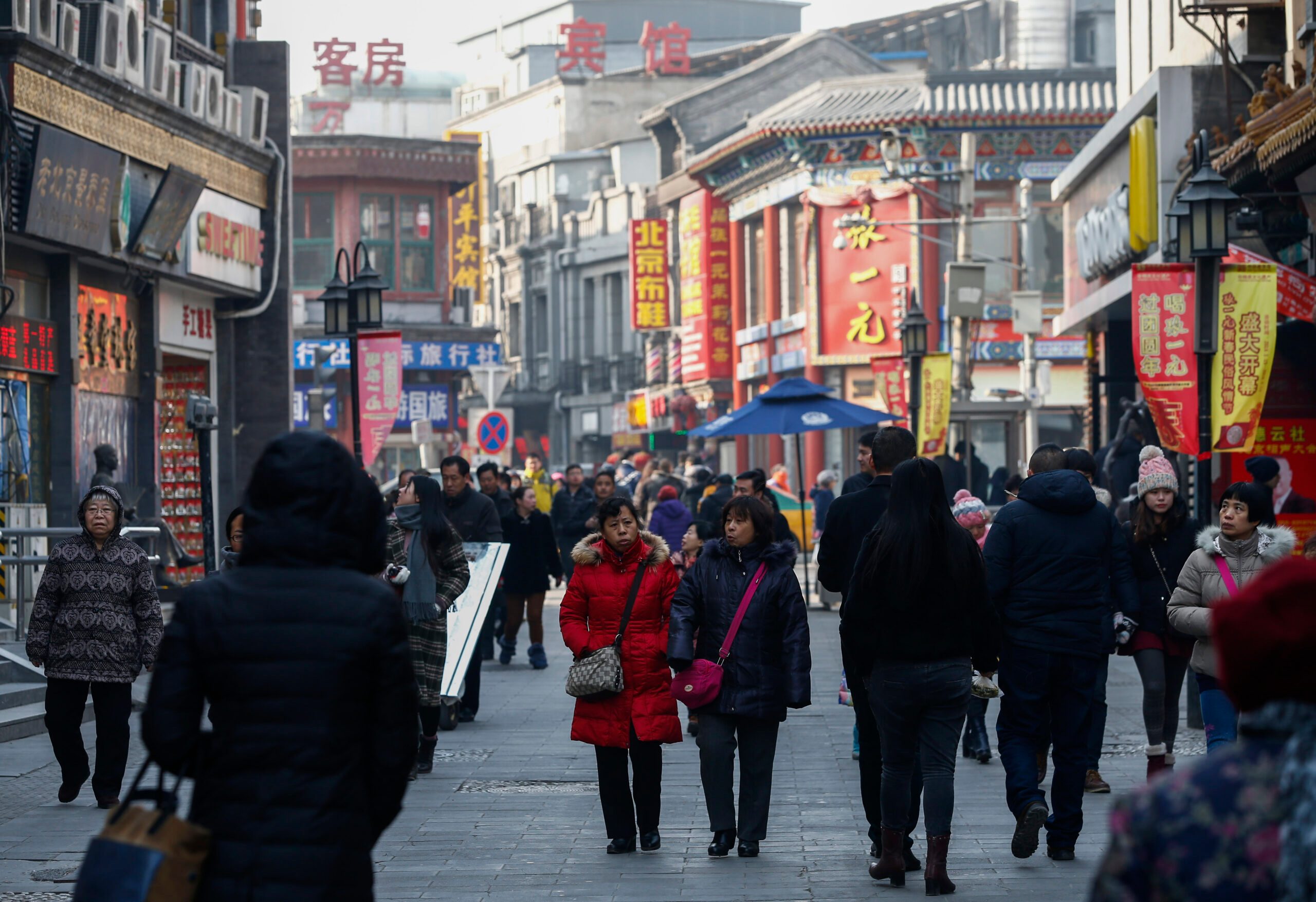SUMMARY
This is AI generated summarization, which may have errors. For context, always refer to the full article.

BEIJING, China (3rd UPDATE) – China’s economy expanded at its slowest rate in 7 years during the first quarter, the government said Friday, April 15, but forecast-beating readings for March raised hopes a growth slowdown in the Asian giant may be bottoming out.
Gross domestic product rose 6.7% in the first 3 months of 2016, matching the median forecast of economists polled by AFP and within the government’s target of 6.5-7.0% for the year.
And in a positive signal for the world’s second largest economy, a key driver of global growth, industrial output rose 6.8% in March, accelerating from the previous month and beating expectations.
The National Bureau of Statistics figures are the latest to show improvement in China, where exports surged 11.5% on-year in March, beating expectations and snapping an 8-month streak of declines. A key official index of factory activity also showed expansion for the first time in 9 months.
The economy saw “sound development” in the first quarter, NBS spokesman Sheng Laiyun said, adding that the readings pointed to “positive changes on major indicators.”
But he cautioned: “We must be aware that we are in a critical stage of transformation and upgrading as well as replacing old drivers of growth with new ones.”
China’s leaders are looking to manage a difficult transition away from the investment- and export-led model of the past to an economy more driven by consumer demand, but the change is proving bumpy and global markets have fretted over the outlook.
“China’s growth looks to have bottomed out,” Julian Evans-Pritchard of Capital Economics said, adding that the data suggest that “policy easing has helped to avert a deeper downturn” – although he noted some “skepticism” about the GDP figures.
The accuracy of Chinese official statistics has often been questioned by critics who contend they can be subject to political manipulation.
As well as industrial output, which measures production at the country’s factories, workshops, and mines, figures for retail sales and fixed asset investment also came in ahead of expectations in a Bloomberg News poll.
Retail sales, a key indicator of consumer spending, increased 10.5% year-on-year in March, the NBS said, while fixed asset investment, a measure of mainly government spending on infrastructure, expanded 10.7% in the first quarter compared to the same period in 2015.
But while the growth rate was “better than expected” and the economy showed “a turn to stabilization,” the NBS spokesman warned that “we can’t be over optimistic” given uncertainties in the world economy.
“Difficulties on structural adjustment persist and downward pressure on the economy cannot be ignored,” he added.
Services accounted for 56.9% of the economy in the first quarter, the NBS said, two percentage points more than last year and nearly 20 percentage points more than secondary industry, which includes mining, manufacturing, and construction.
Despite the upbeat results, the benchmark Shanghai Composite Index edged down 0.14% on Friday.
‘Upward revisions’
Louis Kuijs of Oxford Economics said Friday’s figures showed “a milder deceleration than many had feared,” which was leading to “upward revisions” in growth forecasts.
But the outlook for most expansion drivers was “still subdued” he said, so “the government will need to continue to rely on stimulus, notably infrastructure investment” in order to hit its “overly ambitious” growth targets.
ANZ economists said the data suggested a “stabilization of the ‘old economy,'” but added that they were “cautious on the composition of growth,” particularly the amount derived from financial services.
They predicted that the central bank will keep interest rates low “in light of increasing cases of credit defaults” but would be less aggressive with monetary easing as property bubbles have “started to be of a concern to policymakers.”
Credit growth surged much more than expected in March, official data showed Friday, as new bank loans jumped to 1.37 trillion yuan ($211 billion), and total social financing – a wider measure of credit in the real economy – shot to 2.34 trillion yuan.
Marie Diron of Moody’s, which lowered its outlook on Chinese sovereign bonds last month due to rising debt and capital outflows, said the data attested to Beijing’s ability to “provide stimulus” to lift short-term growth rates.
But she said it may “further increase longer term imbalances” if it encourages more investment by inefficient state-owned enterprises (SOEs).
She pointed to the “very large” 23.3% increase in SOE investment as a “further rise in leverage” and a “negative signal for the sustainability of growth.” – Benjamin Carlson, AFP / Rappler.com
Add a comment
How does this make you feel?
There are no comments yet. Add your comment to start the conversation.